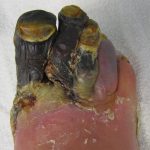
Dr. Maxwell Nartey
Professor of Symptometric Science, American School of Symptometry, NFP
World Center for Health Education and Scientific Enlightenment
Does someone know what causes bedwetting? Can physicians, naturopaths, chiropractors, herbalists, and acupuncturists stop bedwetting? No, they cannot because if they could, children who are twelve years old, young adults who are nineteen years old, and adults who are 40, 50, 60, and 70 years old would not have had this neurological problem.
I am making this issue a topic of discussion because I had family members who were whispering to each other about a 25-year-old female cousin of ours who often wet her bed. How did they know she had this problem? I was told to watch her hang her blanket, and bedsheet to dry in the morning.
Also, I was told that the best way to confirm she wetted her bed was to walk past her bedding, and I would smell urine. I did, and I smelled urine.
This cousin became pregnant, and she gave birth to a baby girl. I will not go any further. Instead, I will ask a few questions. Why was it that my other female and male cousins were not bedwetters? Why wasn’t I a bedwetter? Was my cousin the only adult bedwetter we knew? No. There are millions of them. Potty training may not prevent bedwetting.
The other neurological problem many females and males have is that they wet their underwear when laughing, coughing, or sneezing; and countless mothers suffer from severe incontinence after childbirth.
Some women have even suffered from incontinence until they died. The question is why is incontinence so rampant? The answer is practitioners who are used to treating symptoms cannot figure out the underlying cause of bedwetting and incontinence.
To help men, and women avoid the embarrassment associated with bedwetting or incontinence, diaper designers and manufacturers produced pull-ups for adults. This is because no physician, chiropractor, acupuncturist, and herbalist on this planet can cure incontinence and bedwetting. “This is something you have to learn to live with”, said a urologist.
Symptometry stops every case of bedwetting or incontinence. How? One may ask.
For people who do not know, there is a fascinating science called the science of healing. It is taught at the American School of Symptometry, NFP. To show how this science works, I would discuss bedwetting in detail and how to stop it.
Basic physiology and applied neurology
Two parts of the brain are involved in regulating urination. One is called the cerebrum, and the other is called the cerebellum. Conscious decisions and commands are made in and sent from the cerebrum to the cerebellum in milliseconds.
There are sensorlike protein structures in the bladder muscles. These sensors are connected to the bladder’s sphincter and to the vasomotor center in the cerebellum.
As the bladder is getting full, the sphincter would signal the sensors about the rising urine level. The sensors would then transmit the signal to the cerebrum. Once the cerebrum receives the signal of the rising urine level, it would transmit the urgency signal to the bladder.
This urgency would turn into a conscious urge to urinate. The person would feel this urge. They would get up or stop what they are doing and head straight to the bathroom. This is what happens under normal circumstances. What causes the anomaly called bedwetting?
The underlying causes of bedwetting
The reason 4-year-olds, teenagers, and adults continue to wet their beds is something has been blocking signal transmission and reception between the cerebrum and cerebellum, and between the bladder’s sphincter and the cerebrum. What is it?
In symptometric science, speculation is totally out of the question. A Doctor of Symptometry is required to cure the disease first before formulating a theory. Since I have been stopping every case of bedwetting and incontinence dating back to 2002, I would like to shed some light on the reason bedwetting occurs.
Signal transmission and reception run through the nerves within the three nervous systems (peripheral, autonomic, and central nervous systems); and nerves are embedded in muscles. Therefore, nerves are in every muscle, viscus, and blood vessel.
There are 5 invisible muscle worms. They are Ascaris lumbricoides, Toxacaris, Toxocara, Parascaris, and Enterobius Vermicularis. These worms are only found in the muscles and viscera that have the residues of certain sulfur allotropes but are deficient in these sulfur allotropes. A discussion of the various sulfur allotropes that our cells use to produce essentials would be for another day.
Enterobius Vermicularis are pinworms that are also called threadworms. Who does not have these invisible worms? Every person who itches or urinates frequently day or night has them.
Ascaris, Toxacaris, Toxocara, and Parascaris are different species of threadworms. Medical school does not teach this all-important subject called parasitology. The American School of Symptometry, NFP teaches it.
Therefore, a child who is not born with these sulfur allotropes, and has their residues coming from the mother, would become susceptible to bedwetting regardless of the number of hours devoted to potty training and water intake.
Generally, pinworms lay hundreds of eggs around the anus while threadworms such as Toxocara, Toxascaris, and Parascaris lay hundreds of eggs in the vagina and urethra. These eggs will hatch, and the baby worms will emigrate to the bladder, cerebrum, and cerebellum.
Are these muscle worms visible? No, they are not. They are just like bacteria, viruses, protozoa, and fungi. They can only be seen with the help of a microscope. Some stool tests may reveal their presence, but other stool tests may not. They are most active and they hatch when metabolism is low. Usually, this is when the person is sleeping. This explains why they cause bedwetting during deep sleep.
Now, here is how the above-mentioned muscle worms cause bedwetting.
Muscle worms are extremely obstructive. They will block signal transmission and reception between the cerebrum and cerebellum, and between the cerebellum and the bladder’s sphincter, thereby making it impossible for the urgency signal that the cerebrum transmitted to reach the bladder. This is how urine passes subconsciously without the person having the urge to urinate. In the worst-case scenario, this could happen on a bus, in a taxi, in a car, etc.
Treatment
People have used wormwood, castor oil, Fast Blast, and ground pomegranate seeds to eliminate flukes, roundworms, threadworms, and pinworms without success.
The medications called Mebendazole ®, Pyrantel pamoate ®, and Albendazole ® that are used to treat pinworms don’t work, and physicians know it. Also, mebendazole ® which is used to treat threadworms does not work.
The herbal product that is sold to improve male incontinence reduces the frequency of night urination but it makes the worms migrate to the eyes, eyelids, heart, and brain, which is extremely dangerous. If the person’s eyes begin to water a lot (lachrymation), will they drive to an optometrist or ophthalmologist for eye drops? If the worms fill their salivary glands and cause the overproduction of saliva what will they do next? Drool on their pillow for the rest of their lives? Excessive lachrymation has caused blindness in many cases.
Invisible worms are no joke. They will cause bowel incontinence. What would be the quality of life of a person who has urinary incontinence and bowel incontinence? Would it be excellent, good, fair, bad, or terrible? Your guess will be as good as mine.
How do people become infected with worms? Earlier, I stated that if the sulfur residues are passed down from mother to child at birth, the child will become susceptible to ascariasis (worm disease). Another method of infection is self-contamination.
Self-contamination
Self-contamination is the process where a person who fails to wash their hands, and a fruit or a vegetable before taking a bite will certainly get pinworms, roundworms, and threadworms in their body. Also, rubbing the eyes with a filthy backhand is another way of getting these worms into the body.
Finally, introducing filthy fingers into the vagina during masturbation is the third way of getting worms into the female body.
The breeze or the wind always deposits dust on surfaces (our skin, tables, doorhandle, doorknob, uncovered hair, etc.). Dust almost always contains the eggs of worms because worms lay their eggs in the soil.
Therefore, those who fail to wash their hands before touching pizza, bread, fruit, etc. would certainly self-contaminate.
Debris and concretions as causes of bedwetting
So far, I have discussed being born with sulfur residues, and self-contamination as two methods of worm infestation causing bedwetting and incontinence. The third cause of bedwetting and incontinence is unremoved debris and concretions (calculi, tophus, lithiasis, gravel, pebbles, gout, etc.) from the pathways.
Debris and concretions will block signal transmission and reception between the cerebrum and cerebellum, and between the cerebrum and the bladder. Since a treatment does not necessarily provide the solution, what should the solution be?
The solution
Solving the bedwetting and incontinence problem requires 1) knowing what the causal agents or troublemakers are and 2) knowing their vulnerabilities.
Muscle worms have only one enemy: vibrations, especially low-frequency vibrations coming from thermal and electrical energies. Symptometry has ionizers, hydrolyzers, oxidizers, and providers of electrolytic dissociation to cause low-frequency vibrations.
These low-frequency vibrations will stop worm replications, and destroy their niches and feeding methods, thereby killing their eggs, and starving the adults to death. Therefore, targeting both the eggs and the adult worms has proven to be the most efficient way to destroy worm eggs as well as adult pinworms, threadworms, and roundworms.
Another good news is that it is the low-frequency vibrations from the electricity and heat-laden particulates Symptometry uses that liquefy all concretions.
Unfortunately, healing has been so abused, misconstrued, and mischaracterized by so-called healers, especially herbalists that healing has been considerably devalued. Symptometry is restoring value to the word HEALING and the verb TO HEAL.
Anyone can treat a disease with mud, bogus diets, “Holy water”, “Holy oil”, herbs, vitamins, and minerals such as sulfur, antimony, mercury, colloidal silver, and copper bracelets, and charcoal, salt, and pharmaceutical drugs, but not anyone one can bring about healing.
I am not maligning anyone or belittling anyone’s profession. I am just calling a spade a spade. People have suffered for too long in the name of the treatment business. Symptometry is now here to teach how disease can be prevented and cellular health can be restored.
Healing is a science. It must be taught and learned properly. Our cells do all the healing. All they need are our professional and technical expertise in removing blockages and helminths (worms), repairing DNA, protecting them and DNA from harm, and properly nourishing them. They will do the rest. Again, they will do the rest.
A doctor who did not study healing as a science will never be able to remove the anomaly that the cells produced. Surgery can remove some anomalies, but if the source of the anomalies is not known, they will grow back. Here is the salient fact that must be known by all. Cells produce anomalies called diseases and only they can remove them.
All those who suffer from incontinence or bedwetting, etc. now have Symptometry to turn to.
Worms are a nuisance. If we let them reproduce and grow in us, they will disgrace us, embarrass us, humiliate us, and undermine our confidence. Also, they will ruin our sense of self-esteem and self-worth.
Many adults who wet their bed or suffer from bowel incontinence can’t even have a date. Also, they can’t marry because one isolated bladder accident or colon accident can ruin their relationship or companionship.


 Previous Post
Previous Post Next Post
Next Post